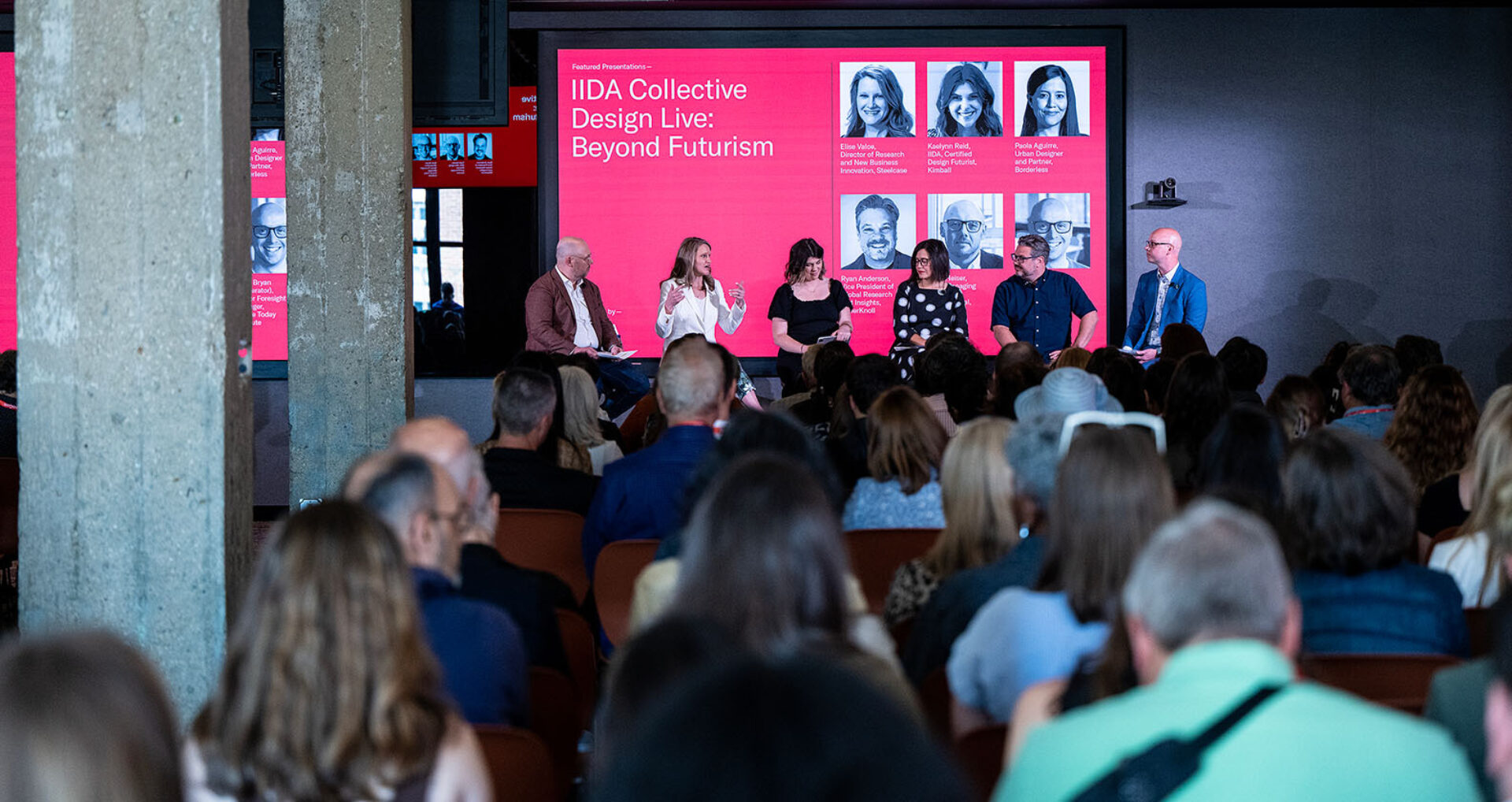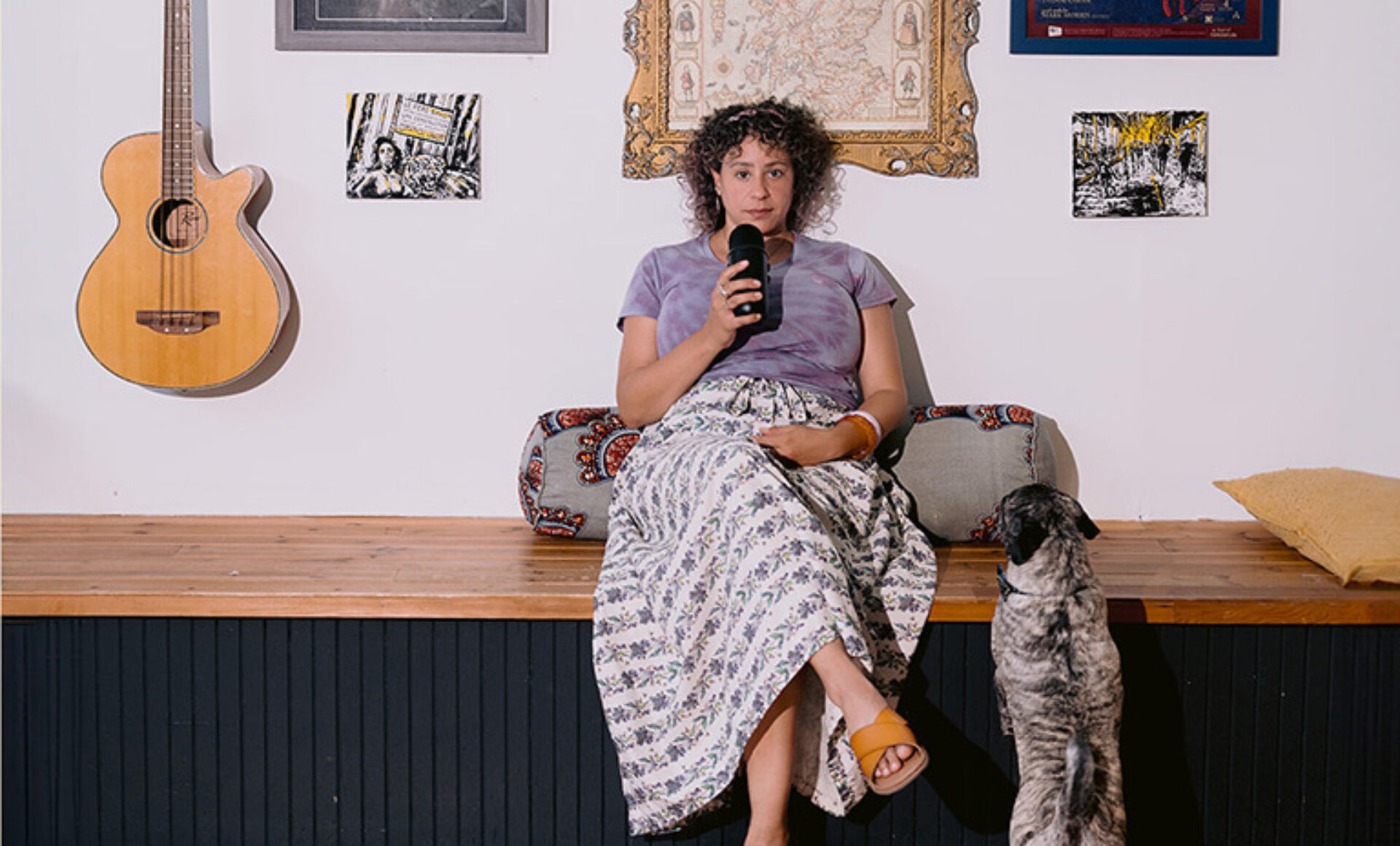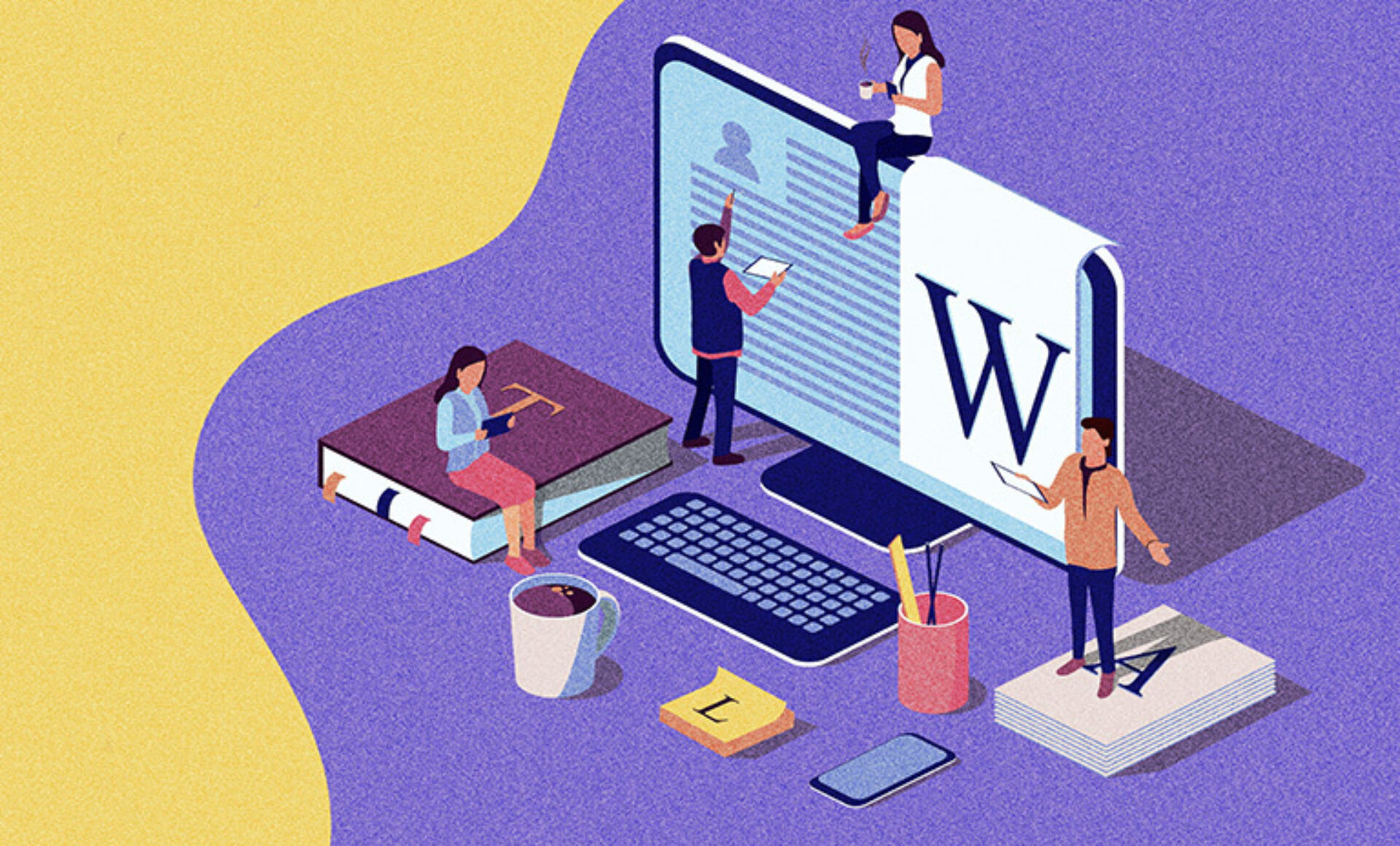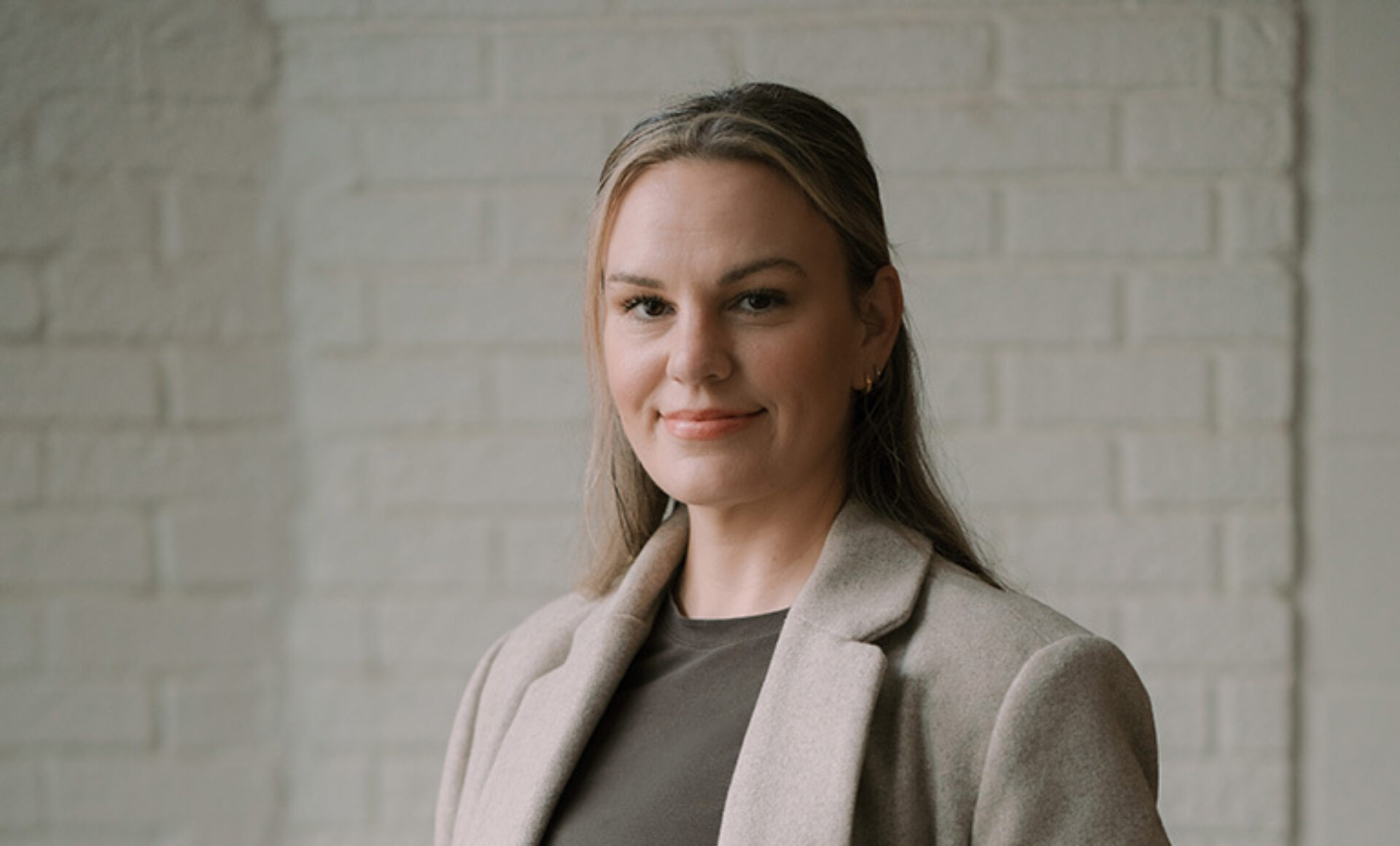What does it mean to think like a futurist? How can one plan around something so fluid and unexpected? What really comes next? Looking for signals to uncover patterns, taking a step back to see forward, and creating expert communities are top of mind for those seeking to be as best prepared as possible. In the “IIDA Collective D(esign) Live: Beyond Futurism,” program presented at NeoCon 2023, Mark Bryan, senior foresight manager at the Future Today Institute, gathered a panel of futurists and design strategy leaders to share insights on understanding, adopting, and applying futurism. Together, they explore its impact on the built environment, find ways to be more connected, engaged, and collaborative, and form a clear vision for both personal and professional growth. Their practical tips and tricks as well as the wisdom they have developed over time are up for the taking.

Above Image: Panelists, Paola Aguirre, Ryan Anderson, Todd Heiser, FIIDA, Kaelynn Reid, IIDA, and Elise Valoe discuss being a futurist today.
Photos by Christopher Dilts
Is there really a "right" answer?
“How do you choose what’s right?” For Bryan, that’s a challenge designers have to face every single day. “The real challenge lies in the ways we advocate,” says Paola Aguirre, urban designer and partner at Borderless Studio. “How do we create collective visions, perspectives, and futures? It’s not about the ‘I,’ it’s about the ‘we,” she adds. “Foresight is a guiding light—we all have to think collectively now in order to achieve later,” says Elise Valoe, director of research and new business innovation at Steelcase. “It’s an actionable steer toward the type of future we want to create,” says Kaelynn Reid, IIDA, certified design futurist at Kimball International. “It’s a due diligence thing—but it’s also fun,” adds Ryan Anderson, vice president of global research and insights at MillerKnoll. Todd Heiser, FIIDA, principal and managing director at Gensler’s Chicago office, calls it “accelerated serendipity.”
Many voices, one future
They all agree that community comes first. “We have to ensure everyone’s voice is heard,” says Bryan. “Design is an exchange process—it’s full of generosity,” says Aguirre. “One needs to think about the tools and needs but also consider who has access to them in order to make a difference. It’s not cookie-cutter.” But how do you do that? “You bring people in. More people equal more voices and more diverse perspectives,” says Heiser. “They don’t even have to come from a traditional path of design education,” he adds, encouraging design professionals to consider realities and experiences divergent from their own in order to explore new pathways for creativity. “Think of it as a more bold and broad way of collaboration similar to what happens in the fashion or music industries.”
Without data, it's just an opinion
“It can take weeks, months, years to understand and be able to imagine what the future would look like,” says Bryan, stressing the importance of research and evidence versus speculation. “We absolutely have to be grounded in data—to get into the habit of secondary research,” adds Reid. “And it’s equally important to get out of the design eco-chamber—to think bigger.” Valoe seconds that thought. Perspective changes when one looks outside of their practice but when they look outside of the design industry as a whole, that’s where real progress happens. “Think: strategic data, generative AI, immersive environments within VR… We work collaboratively with academics, researchers, and the MIT Media Lab in order to make informed decisions way before we make a recommendation to our clients,” she adds.
Trend or trend-y?
“Does it have substance?” Valoe urges designers to think twice. Does it really add to the experience or does it simply put a layer on top? “You have to break the hype-cycle,” says Anderson. “Does it have purpose? Who is it for?” Identifying the trends as movement and transformation over time and being able to distinguish them from fads, which are rather short-lived and tend to come and go very quickly, is critical. Heiser agrees. “You really need to think about it: what is the future and where is it going to occur? Cities, as we know them, will dramatically change.” Take the Metaverse, for example. “Even if the work itself doesn’t happen in the Metaverse, as a designer, you have to consider that the amount of time people spend there is going to affect the way we work and live,” says Valoe.
Embracing uncertainty.
“You have to be comfortable with uncertainty,” says Heiser, explaining that design futurists might get 80% right but one still has to allow a 20% for things that don’t go as planned. “More than looking into what’s next, you need to ask yourself ‘what if.’ That’s the only thing that helps to overcome uncertainty.” By exploring multiple different possibilities while remaining open to new ideas, design futurists create value from uncertainty. They advise to stay away from the doom spiral and look at design futurism as hope instead. As they alternate between broad and narrow ways of thinking, they encourage conversation and discourse, and ultimately, they help move the design profession forward. In short: they teach us how to be a little wiser.
What’s next?
Reid believes in the power of storytelling. “You have to listen to the stories and to the feedback in order to think differently—that’s the only way to have richer conversations, to learn, and to find ways to add value,” she says. Aguirre agrees. “Storytelling is powerful,” she adds, approaching a design challenge from a reverse engineering perspective: If you simply ask the question, the response is going to point you in the right direction. You first identify the need, you assess the immediacy, you identify criteria, constraints, and priorities, and you finally design a solution. How cool would it be to be able to simulate a scenario and map out human interaction before you even roll it out? “It’s about allowing people to design the future rather than being disrupted by it,” says Valoe. Heiser remembers Art Gensler: “It’s like taking a rubber band and stretching it,” he’d say. “But you have to be careful not to break it—because that’s no longer foresight!”
This program will be live on the NeoCon Hub through mid-August and then will be hosted on IIDA.org.











